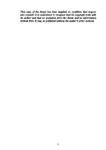Phenomenology from Lattice Field Theory Simulations
| dc.contributor.supervisor | McNeile, Craig | |
| dc.contributor.author | Sinha Ray, Gaurav | |
| dc.contributor.other | School of Computing, Electronics and Mathematics | en_US |
| dc.date.accessioned | 2023-02-03T09:41:30Z | |
| dc.date.available | 2023-02-03T09:41:30Z | |
| dc.date.issued | 2023 | |
| dc.identifier | 10632217 | en_US |
| dc.identifier.uri | http://hdl.handle.net/10026.1/20234 | |
| dc.description.abstract |
Lattice QCD is a well-established ab initio probe of the Strong interaction in the low energy nonperturbative regime. As a systematically improvable numerical tool it has proven an effective means of validating the Standard Model against observations from particle physics experiments. In this thesis two topics of phenomenological importance are studied on lattices generated with the Nf = 2+1+1 Highly Improved Staggered Quark action, the spectroscopy of hybrid charmonium mesons, and the hadronic vacuum polarisation. Chapters 1 and 2 serve as a brief introduction to the lattice and provide the relevant background on the theoretical concepts. Basic ingredients such as the discretisation of QCD, the Staggered fermion formulation, and the latticisation of QED are described. The procedure for generating gauge fields and measuring correlators is outlined and the statistical concepts behind the extraction of physical information from the correlators are explained. Over the last two decades many resonances have been observed that do not fit within the longstanding Quark Model. Hybrid mesons (qqg), mesons with an excited gluonic component, have been proposed as part of the solution to this mismatch. Chapter 3 describes the construction and study of hybrid mesons in the charmonium sector on the lattice. Results are presented for the mass of the JPC =1−+ state at multiple lattice spacings, and the mass and decay constant of the JPC =1−− state at one lattice spacing. In the decade since the discovery of the Higgs boson few signs of beyond the SM physics have been observed. Of those the anomalous magnetic moment of the muon has garnered the most attention. Chapter 4 describes work done to include the effects of quenched QED on the leading order hadronic vacuum polarisation contribution to the anomaly. Blinded results for the QED corrections to the light and strange connected hadronic vacuum polarisation are presented. | en_US |
| dc.language.iso | en | |
| dc.publisher | University of Plymouth | |
| dc.rights | Attribution-NonCommercial 3.0 United States | * |
| dc.rights.uri | http://creativecommons.org/licenses/by-nc/3.0/us/ | * |
| dc.subject | particle physics | en_US |
| dc.subject | computational physics | en_US |
| dc.subject.classification | PhD | en_US |
| dc.title | Phenomenology from Lattice Field Theory Simulations | en_US |
| dc.type | Thesis | |
| plymouth.version | publishable | en_US |
| dc.identifier.doi | http://dx.doi.org/10.24382/777 | |
| dc.rights.embargoperiod | No embargo | en_US |
| dc.type.qualification | Doctorate | en_US |
| rioxxterms.funder | Science and Technology Facilities Council | en_US |
| rioxxterms.identifier.project | ST/S50564X/1 | en_US |
| rioxxterms.version | NA | |
| plymouth.orcid_id | 0000-0003-1956-7659 | en_US |
Files in this item
This item appears in the following Collection(s)
-
01 Research Theses Main Collection
Research Theses Main



